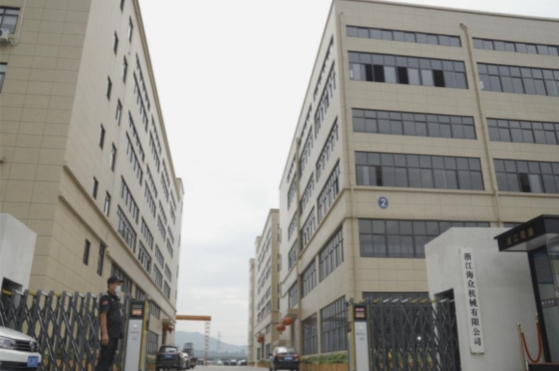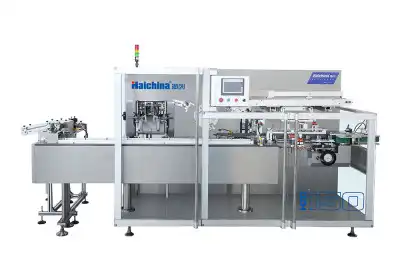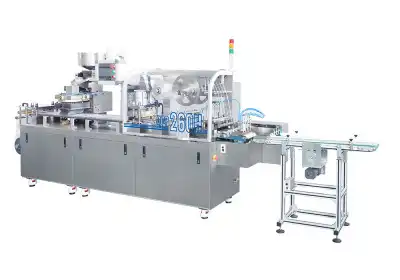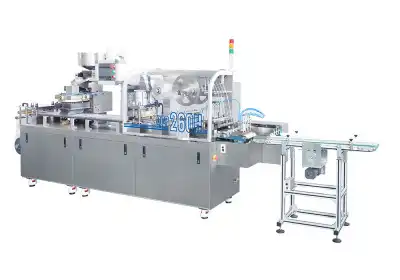Mechanical Malfunctions in Automatic Cartoners
Carton Feeding Issues
One of the most common problems with automatic cartoners is improper carton feeding. This can result in jams, misaligned cartons, or failure to pick up cartons from the magazine. To resolve this issue, start by checking the carton magazine for proper loading and ensure the vacuum cups or mechanical grippers are clean and functioning correctly. Adjust the timing and pressure settings if necessary, and consider replacing worn-out components that may be affecting the feeding mechanism.
Sealing System Failures
Faulty sealing can lead to open or improperly closed cartons, compromising product integrity. Inspect the glue application system regularly, ensuring proper temperature and viscosity of the adhesive. For heat-sealing cartoners, verify that heating elements are functioning correctly and maintain consistent temperature. Clean and calibrate sealing components periodically to prevent buildup that can affect sealing quality.
Drive System Problems
Issues with the drive system can cause erratic machine operation or complete stoppage. Regularly check and lubricate all moving parts, including chains, gears, and bearings. Monitor belt tension and alignment, adjusting as needed. If you notice unusual noises or vibrations, investigate immediately to prevent more severe damage to the cartoner's drive components.
Product Handling and Alignment Challenges
Inconsistent Product Placement
Proper product placement within the carton is crucial for packaging integrity and appearance. If products are not consistently positioned, review the infeed system of the automatic cartoner and adjust guide rails or pusher mechanisms. Ensure that the product transfer timing is synchronized with the automatic cartoner's main drive. For delicate items, consider implementing gentle handling solutions like servo-controlled pushers or air-assisted transfer systems.
Multi-Pack Collation Errors
When packaging multiple items in a single carton, collation errors can occur, leading to incorrect product counts or arrangements. Verify that the collation system is correctly timed and that sensors are functioning properly to detect missing or extra products. Implement vision systems for more complex collation requirements, ensuring accuracy in multi-pack configurations.
Product Damage During Insertion
Delicate products may be damaged during the insertion process if the cartoner is not properly adjusted. Fine-tune the insertion mechanism speed and motion profile to handle products gently. Consider using specialized insertion tools or guides designed for fragile items. Regular maintenance of insertion components, such as buckets or pushers, can also help prevent product damage.
Operational Efficiency and Quality Control
Speed and Capacity Limitations
As production demands increase, you may encounter limitations in your automatic cartoner's speed or capacity. Evaluate your current machine's capabilities and consider upgrading to a higher-speed model if necessary. Optimize your packaging line layout to improve product flow and reduce bottlenecks. Implement lean manufacturing principles to streamline operations and maximize efficiency without compromising quality.
Inconsistent Carton Forming
Poorly formed cartons can lead to packaging defects and product protection issues. Regularly inspect and adjust the carton forming station, ensuring that scoring lines are crisp and fold properly. Check that the forming mandrel or plows are correctly aligned and in good condition. Use high-quality carton blanks that meet specifications for consistent results.
Code Printing and Verification Errors
Accurate coding and marking are essential for traceability and compliance. If you experience issues with code quality or readability, check the print head for cleanliness and proper alignment. Ensure that the substrate surface is suitable for the chosen printing technology. Implement vision systems for real-time verification of printed codes, rejecting any cartons with illegible or incorrect information.
Conclusion
Addressing common problems with automatic cartoners requires a proactive approach to maintenance, regular calibration, and a deep understanding of your specific machine's intricacies. By implementing the solutions outlined in this guide, you can significantly improve the reliability and efficiency of your packaging operations. Remember that preventive maintenance and operator training are key to avoiding many of these issues in the first place. Stay vigilant, keep your equipment in top condition, and don't hesitate to seek expert assistance when faced with complex challenges.
FAQs
How often should I perform maintenance on my automatic cartoner?
Regular maintenance is crucial for optimal performance. Daily checks for cleanliness and proper operation, weekly inspections of moving parts, and monthly comprehensive servicing are recommended. However, specific schedules may vary based on usage and manufacturer guidelines.
Can I upgrade my existing cartoner to increase its speed?
In some cases, yes. Consult with the manufacturer or a packaging machinery specialist to explore upgrade options such as drive system enhancements or control system updates that could improve speed without compromising quality.
What are the most common causes of product jams in automatic cartoners?
Product jams often result from improper timing, misaligned guide rails, incorrect carton size, or issues with the product infeed system. Regular adjustments and maintenance can help prevent most jamming incidents.
Expert Automatic Cartoner Solutions | Haichina
At Haichina, we are a trusted automatic cartoner supplier and specialize in providing top-tier automatic cartoners and comprehensive packaging solutions. Our state-of-the-art cartoning machines are designed to address common industry challenges, offering high-speed operation, versatile product handling, and robust construction. As a leading cartoner manufacturer and supplier, we ensure our equipment meets the highest standards of efficiency and reliability. For expert guidance on optimizing your packaging line or to explore our range of innovative cartoning solutions, contact our team at [email protected].
References
Smith, J. (2022). "Advances in Automatic Cartoning Technology." Packaging Engineering Journal, 45(3), 78-92.
Johnson, A. et al. (2021). "Troubleshooting Guide for Industrial Packaging Equipment." Technical Press, 3rd Edition.
Brown, R. (2023). "Optimizing Product Flow in High-Speed Cartoning Operations." International Journal of Packaging Innovation, 12(2), 145-160.
Lee, S. and Park, H. (2022). "Quality Control Measures in Automated Packaging Systems." Quality Assurance in Manufacturing, 18(4), 302-318.
Garcia, M. (2021). "Energy Efficiency in Modern Cartoning Machines." Sustainable Packaging Technologies, 7(1), 55-70.
Wilson, T. (2023). "The Impact of Industry 4.0 on Packaging Automation." Digital Transformation in Manufacturing, Springer, pp. 201-225.





